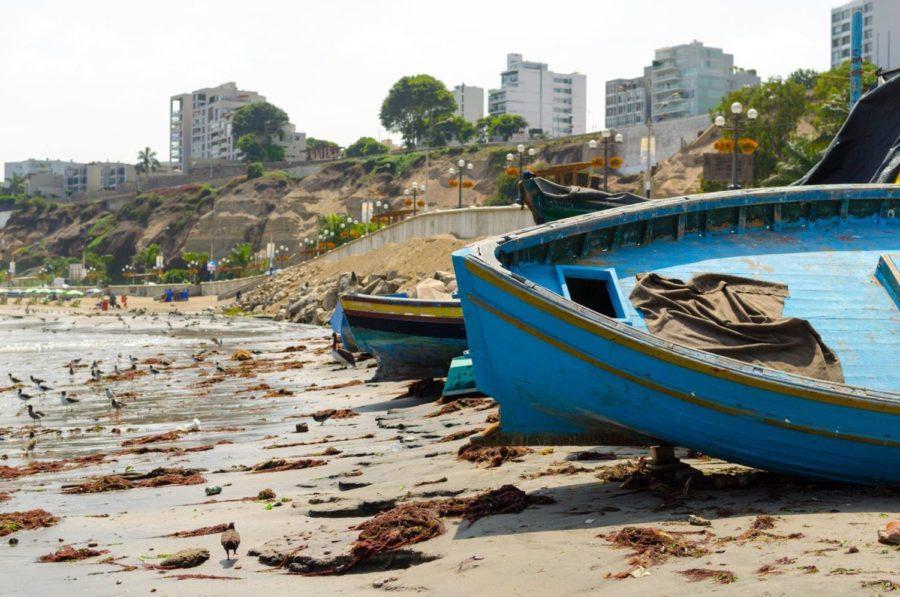What is Studio Andino?
Photos courtesy of the Studio Andino Facebook page.
Abandoned fishing boats near the Chorrillos wharf in Peru. Studio Andino, open to advanced students in the College of Design, plans to revamp the wharf within the next few years.
October 6, 2015
Studio Andino is an open option design studio available in the spring that focuses on design-build projects in Lima, Peru. Recent years’ projects include:
-
Theoretical research, a type of research typical for the College of Design. Students looked around Lima, investigated issues and proposed plans without implementing them.
-
Design charrettes with students from the Peruvian University of Science. These charrettes consisted of short bursts of planning.
-
A micro-library for children in Comas, which students built over spring break. Before arriving in Peru, the studio collected over 600 donated books in Ames to fill the library, which were then packed with the rest of the students’ luggage.
-
A playground in Manchay. Located in the sweltering southern hemisphere, children had nowhere to escape the sun. This is where Studio Andino came in, building shade structures as well as playground equipment out of spare tires. A soccer field also got a makeover in the form of shade structures and a mural. Students visited a Chorrillos wharf that needed maintenance to stay relevant. At the wharf they began their project by building a collapsable table for the fish market.
In order to pay for the work students implement in Peru, Studio Andino has become the guinea pig for ISU’s new crowdfunding website, fundisu.foundation.iastate.edu. On the website is a video about the studio and information about it’s previous work.
According to their website, “donations to this fund will pay for materials and tools, transportation, food and water for students, and other expenses directly associated with the design-build projects.”
They hope to reach their goal of $7,000 to help fund future work in Peru. The page will be available until Oct. 15.
















